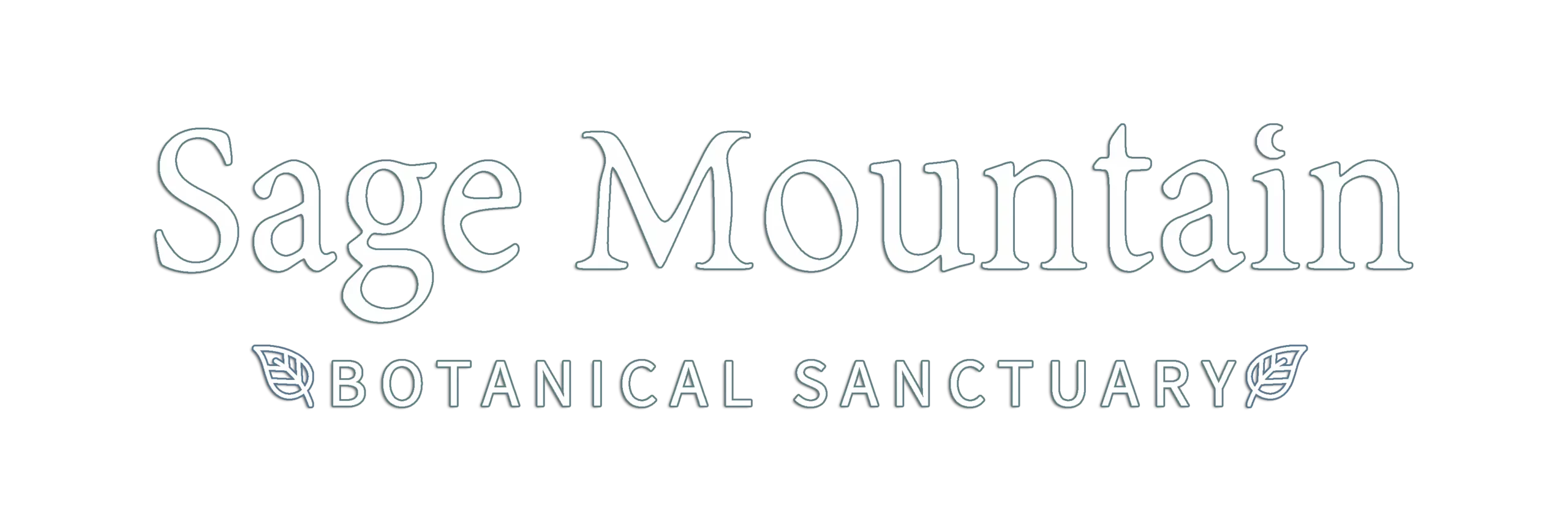Gardens
We may think we are nurturing our garden, but of course it’s our garden that’s really nurturing us.
Jenny Uglow
The History of Sage Mountain's Gardens
With over 30 years of legacy and over 200 cataloged species, our gardens hold unique cultural significance to herbalists, botanists and the greater New England gardening community. First cultivated in 1992 by Rosemary Gladstar and her herbalism students, neighbors, and dear friends, the gardens provide students with hands-on learning experience. Over the last three decades, these gardens have served as a classroom for thousands of students. Sage Mountain Botanical Sanctuary is dedicated to preserving this legacy and its teachings.
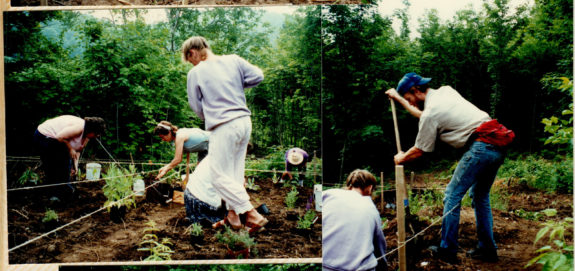
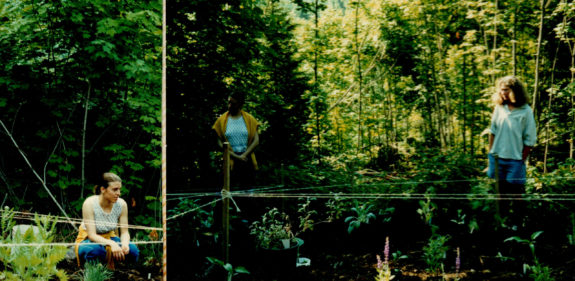
Students reflecting on their first Garden planting.
Rosemary treasures the frontier between the cultivated garden and the untamed land surrounding. This area where wild and domestic plants coexist displays a rich abundance and exceptional variety.
Shatoiya and Richard de le Tour – Herbs and Health, May/June 2001
South Meadow Garden – Early 2000s
Preserving our Botanical Heritage
Dedicated to preserving botanical heritage, our curated selection of endangered and at-risk plants provides students with learning opportunities for cultivation and habitat restoration, and a library for propagation and research.
At-risk plants found in our gardens include:
- Black Cohosh
- Bloodroot
- Blue Cohosh
- False Unicorn
- Ginseng
- Goldenseal
- Wild Ginger
- Wild Yam
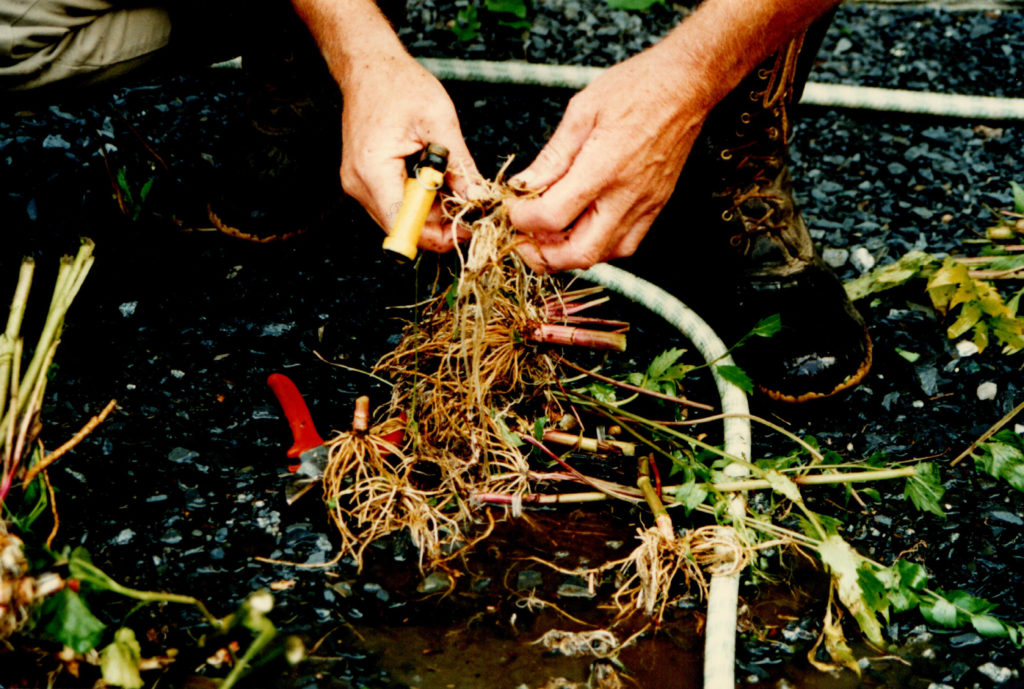
Our garden’s inspiration and success is also due largely to the knowledge and help of many notable regional herbalists and garden experts. Plants from beloved herbal elders such as Tasha Tudor and Adele Dawson can still be found flourishing. Adele’s wild meandering herb gardens in Vermont provided much inspiration for Sage Mountain’s garden style.
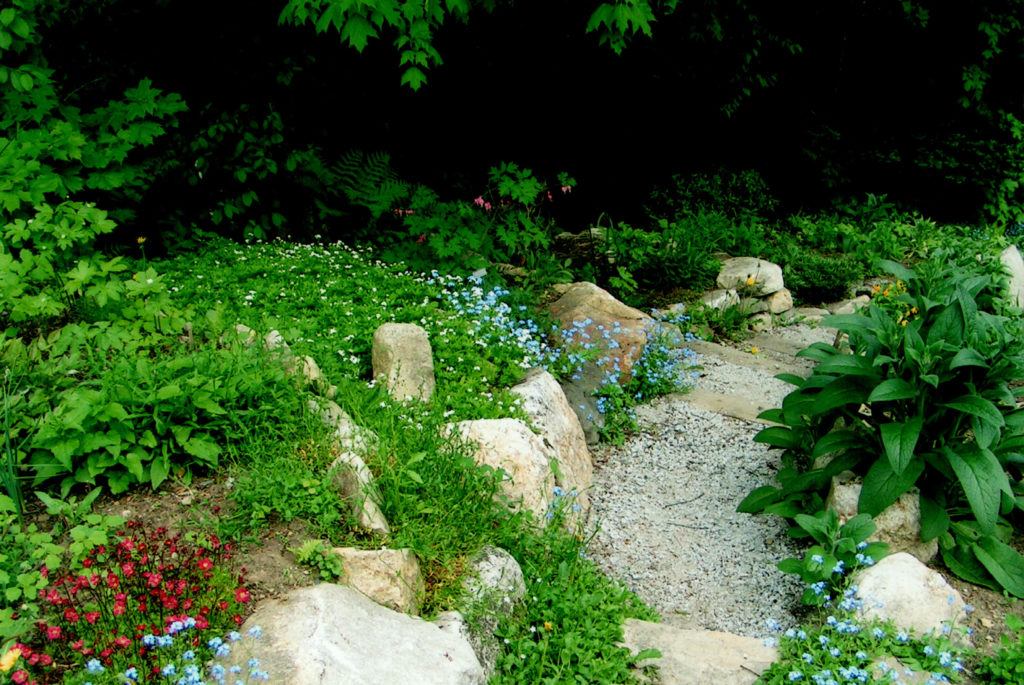
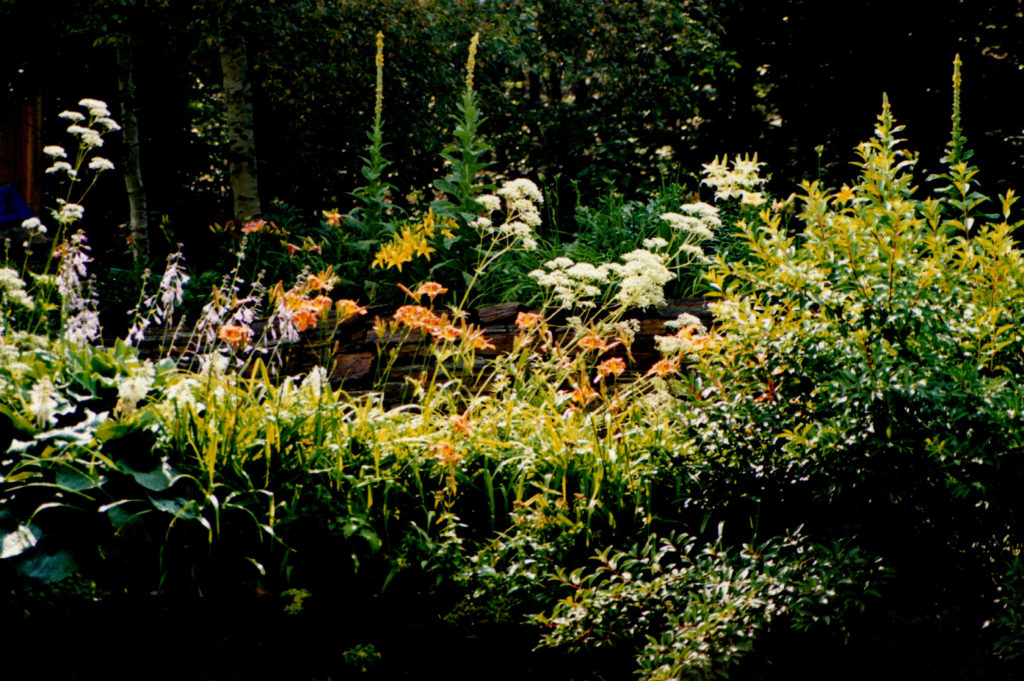
One collection of special plants such as Adele Dawson’s comfrey, alongside rare and at-risk medicinal species.
Over the years, a number of herbalists have provided inspiration and support for the herbal gardens. Adelma Grenier Simmons at Carprilands Herb Farm in Coventry, Connecticut also inspired much of the garden’s design and style. Judith and Rachel Kane, Owners of Perennial Pleasures in Vermont assisted in much of the early planning. Neighbors, friends, and many students and local volunteers poured their sweat and love into creating the gardens we know and love today.
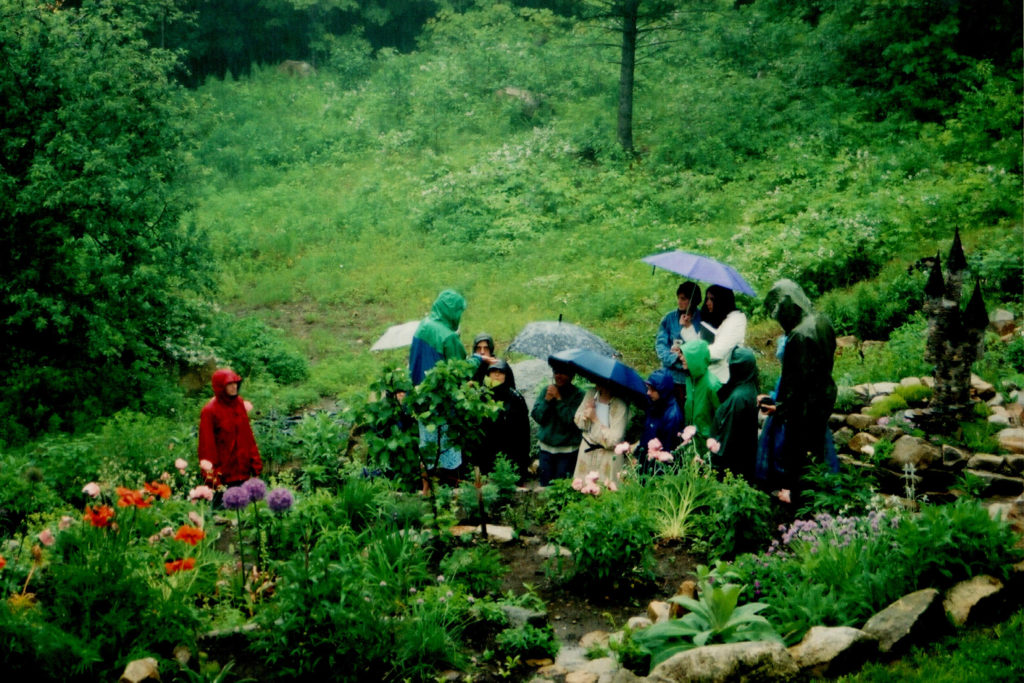
Our gardens provide an outdoor classroom and living library.
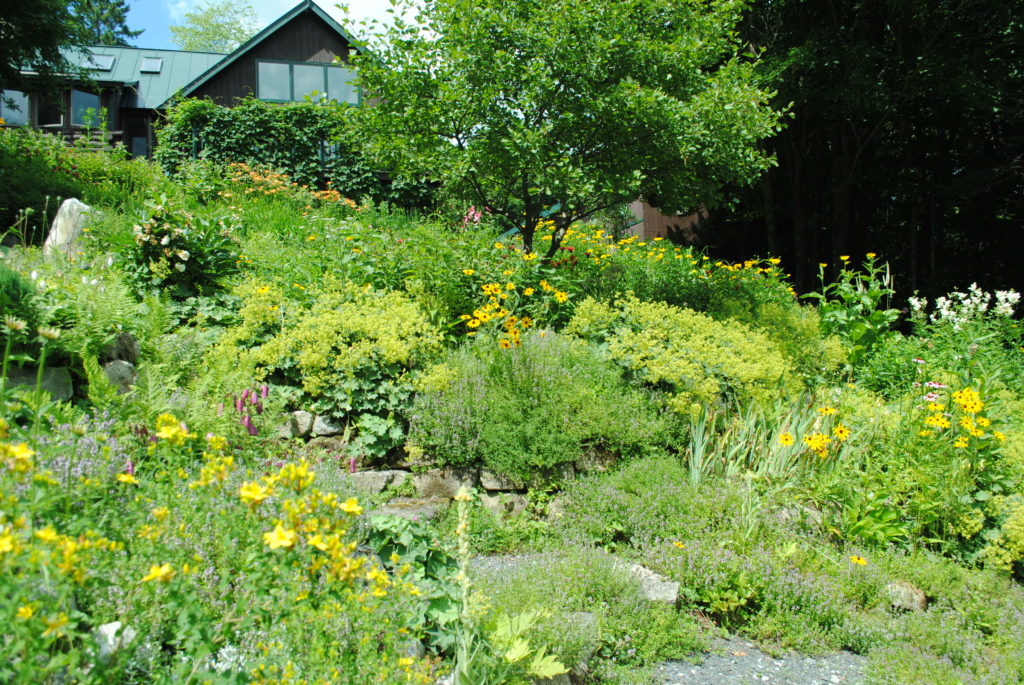
South Meadow Garden – Summer 2019
Pollinators & Wildlife
Our Gardens are frequented by many native pollinators as well as wildlife. Creatures spotted frequently in our gardens include:
- Bear
- Deer
- Hooded Vireo
- Monarch Butterflies
- Turkey
- Woolly Bear Caterpillar
Access to Gardens
We are currently developing ways to make our gardens more accessible, from curating classes onsite and online and producing educational publications, to digitizing our catalog of botanical species for scientific research and collecting seed and root stock for propagation among local gardens and students. Our onsite programs and seasonal garden internships are on hiatus for 2020 due to COVID-19, but we welcome applications to our waiting list for future seasons.
